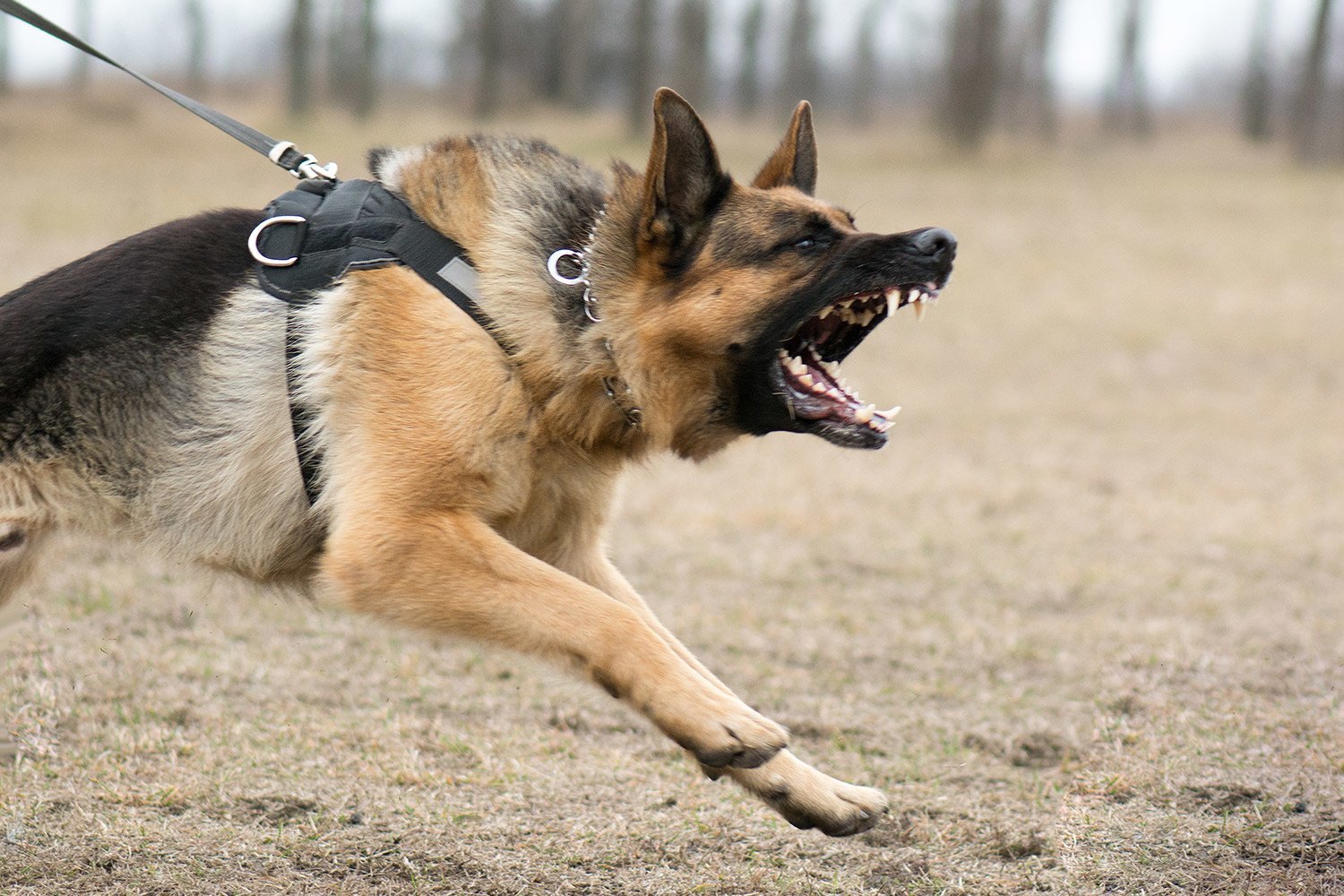
Recognizing signs of aggression in dogs is critical to ensuring safety and taking appropriate action to address and manage the behavior. It is important to note that aggression can occur in any breed and is not solely determined by breed type. Aggression can result from a variety of factors, including genetics, upbringing, socialization, and environmental influences. Here are some common signs of aggression in dogs:
generate
Snarling: Dogs may snap when they
Showing Teeth: A dog that shows its teeth, especially one with a wrinkled muzzle, is showing aggression. This often precedes a bite.
Hard Body Language: Aggressive dogs often have stiff body language. Their body is tense and their posture is rigid and straight.
Raised hair: when the hair on a dog's back stands up
Lunging: Dogs that lunge at people or other animals while on leash may exhibit aggressive tendencies.
Snarling or biting: The most obvious sign of aggression is snapping or biting. This behavior is intended to cause harm or intimidate.
Guttural Bark: Aggressive barks are often different from normal barks. It may be lower, more intense and accompanied by a growl.
Avoidance or fear: In some cases, aggression can be caused by fear or anxiety. An aggressive dog may try to avoid or run away
Resource guarding: dogs
Body blocking: Some aggressive dogs may use their body to block access to a certain area or person.
Unpredictable Behavior: Dogs that exhibit unpredictable or erratic behavior, especially when unprovoked, may be aggressive.
Pinning or mounting: Aggression can manifest itself in dominance-related behaviors such as pinning or mounting on other animals or people.
Direct Gaze: An aggressive dog may maintain a direct, unwavering gaze that can be seen as a challenge.
Excessive vocalization: Although not always a sign of aggression, constant and intense barking, especially when accompanied by other signs, can indicate aggressive tendencies.
If you suspect your dog is showing signs of aggression, it is important to take precautions to ensure safety:
Do Not Approach: Avoid approaching or attempting to interact with an aggressive dog.
Seek the advice of a professional: Seek the advice of a professional dog trainer, behaviorist, or veterinarian who specializes in behavior problems to evaluate and address aggression.
Use caution: Always exercise caution around an aggressive dog and use safety precautions such as muzzles or leashes recommended by a professional.
Training and Socialization: Early socialization and positive reinforcement training can help prevent aggression in dogs. Training should begin at an early age.
Neutering: Neutering can help reduce aggression in some dogs.
Remember that dog aggression is a complex behavior and the reasons behind it can vary. In some cases, health problems or pain may contribute to aggressive behavior, so a thorough examination by a veterinarian is also important.






